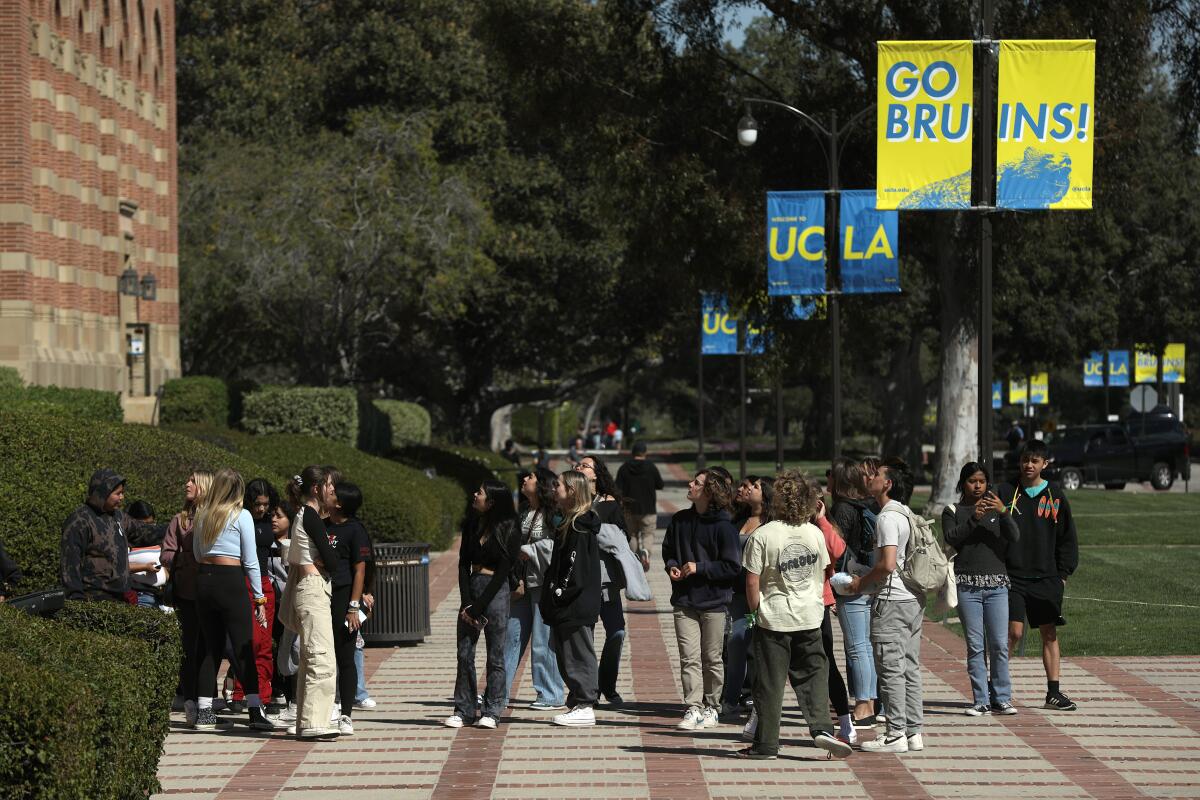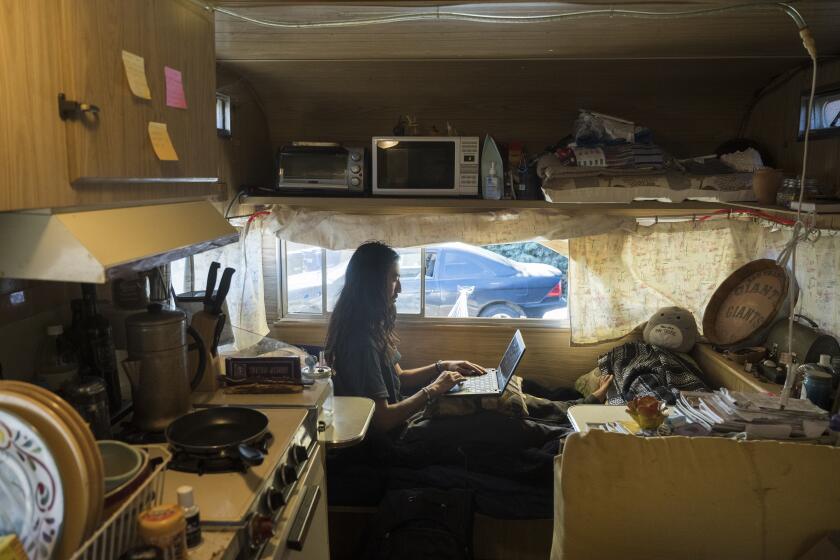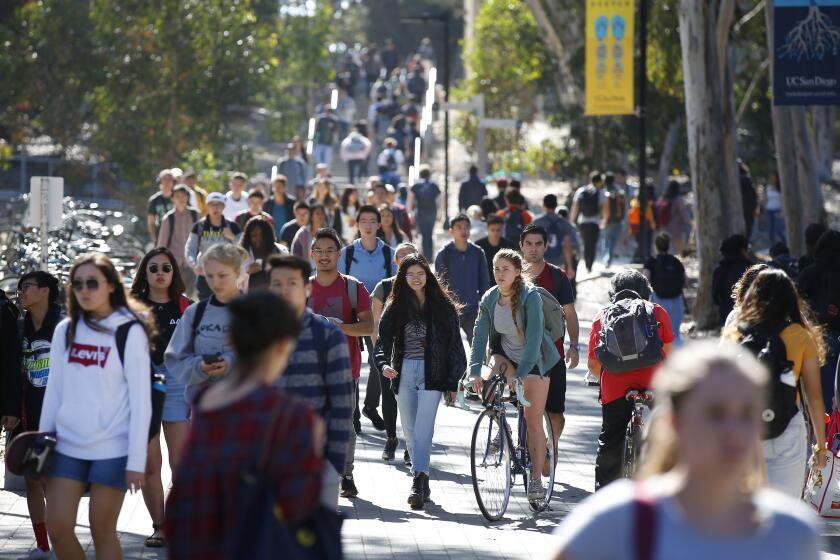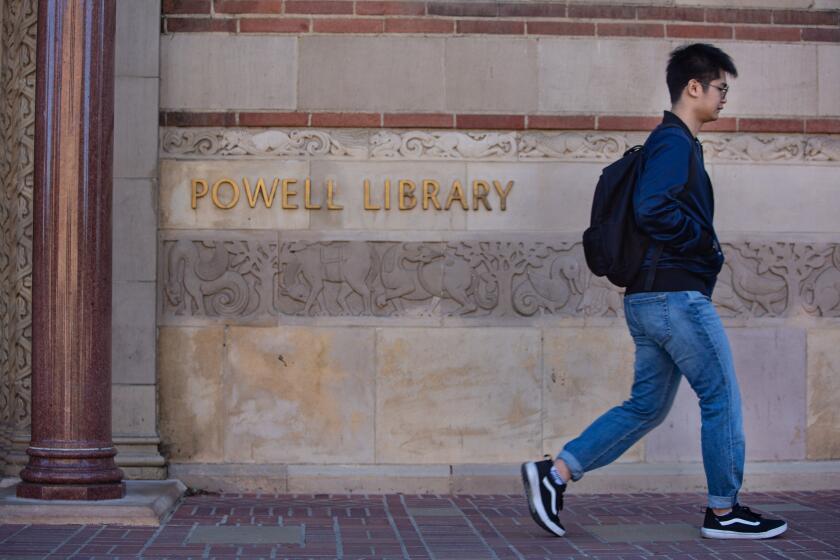UC proposes first-time systemwide admission guarantee to all qualified transfer students

The University of California on Tuesday unveiled its first-ever systemwide admission guarantee for qualified transfer student applicants — but access to particular campuses is not assured.
To receive the guarantee, community college students would need to complete a newly unified set of general education courses required by both UC and California State University, complete specific coursework needed for UC majors, and earn a minimum GPA.
Those who are not admitted to their campuses of choice would be offered a spot at UC Santa Cruz, UC Merced or UC Riverside, a UC admissions official told legislators at an Assembly budget hearing Tuesday. The intent is to simplify the transfer path so students clearly understand the requirements and don’t take more courses than needed, UC officials said.
“The key to transfer is to ask of students only what they need to do and not more,” said Susan Cochran, chair of the UC systemwide Academic Senate. “We think this proposal ... is a positive step forward for simplifying transfers and helping UC meet its responsibilities to the people of the state of California.”
Three-fourths of applicants from state community colleges are admitted to UC, more than half of those enrolled pay no tuition and 89% graduate — a rate slightly higher than those who start as first-year students and significantly higher than the 55% national average, according to UC data. One-third of UC undergraduates are transfer students.
Litigation blocking student housing projects, a potential delay in state funding and escalating construction costs are among the challenges.
But in the past few years of pandemic turmoil, UC and CSU have struggled with declining transfer applications as community college enrollments have plunged.
UC transfer applications have fallen at every campus, declining systemwide to 39,363 for fall 2023 from 46,155 for fall 2021. Even UCLA, the nation’s most applied-to campus, saw a drop to 23,954 from 28,440 during that same period. Last year, UCLA increased the number of transfer applicants offered admission and was ultimately able to enroll more of them for fall 2022.
The UC systemwide plan countered Gov. Gavin Newsom’s directive in his proposed 2023-24 budget that called on UCLA to adopt a transfer guarantee program or face a $20-million cut in state funding.
Last month, the nonpartisan Legislative Analyst’s Office recommended rejection of Newsom’s plan, noting that UCLA enrolls more transfer students than any other UC campus and graduates them at higher rates.
The LAO called Newsom’s directive unfair and “particularly myopic” by singling out one campus and linking funding for it to a narrow set of outcomes.
But not everyone embraced the UC proposal, favoring instead a single transfer pathway that community college students could complete for admission to either UC or CSU. Some have pushed UC to extend an admission guarantee to those who complete a community college associate degree for transfer.
Cal State admits all students who earn that two-year degree and meet minimum GPA requirements, but guarantees admission only to the system, not to specific campuses.
“California must demystify the transfer pathway for students. While we appreciate University of California leadership for their openness to a long overdue systemwide transfer guarantee, the newly proposed UC transfer pathway only adds to the complexity and confusion around transfer,” said Michele Siqueiros, president of the Campaign for College Opportunity.
After two years of record growth, the University of California received a smaller number of applications for fall 2023, led by drops in students from other states and countries.
Assemblyman Kevin McCarty (D-Sacramento), who chairs the Assembly Budget Subcommittee on Education Finance, also has pushed for a single pathway — and suggested that UC’s reluctance to adopt the same requirements as CSU was a “turf battle.”
McCarty said that students have suffered from the long wait for a simplified transfer pathway to UC. “What’s the solution? Maybe it’s called ADT,” he said, referring to the state community college system’s two-year transfer degree.
UC academic leaders, however, say the issue is not turf but the differences in what UC and CSU require for their majors.
A CSU math major, for instance, requires linear algebra or differential equations. But UC requires both, plus a full-year sequence in the sciences. UC requires calculus for a business degree; CSU does not.
It’s unclear how much difference a systemwide transfer admission guarantee would actually make.
Six of the nine UC undergraduate campuses already offer transfer guarantee programs, and most omit certain majors from the program due to the high number of applicants for limited seats.
UC Davis, for instance, excludes its new major in data science. UC Irvine omits art, business administration, dance, music, nursing science and all majors in the Donald Bren School of Information and Computer Sciences. The Irvine campus does offer the guarantee for other popular majors, such as biological sciences and psychological sciences.
Systemwide, 13,031 of 46,155 prospective transfer students applied for fall 2021 through the guaranteed admission program. In a memo presented to regents, UC said its top priorities include doubling the number of students with transfer admission guarantees, increasing those from underrepresented backgrounds and strengthening transfer support services particularly in the Central Valley and Inland Empire.
The U.S. Supreme Court hearings on affirmative action this week highlighted widespread fears among Asian Americans that they face bias in selective college admissions.
While the new proposal would include UCLA, UC Berkeley and UC San Diego in the transfer guarantee program for the first time, no campus would be required to accept more students than they have room for. In practice, that would ultimately mean the most selective campuses would raise their minimum required GPAs if flooded with new applications.
Competition for seats — and the stress that causes high school students today — already is a huge problem, legislators said at the hearing.
Assemblyman Al Muratsuchi, (D-Torrance), related how his daughter is now preparing for high school and the data show that students at that campus aspiring for admission to UCLA and UC Berkeley need GPAs of 4.6 or 4.7 — requiring them not only to ace virtually every class but also to take a slew of Advanced Placement and honors classes.
“That is the kind of pressure students are putting on themselves,” Muratsuchi said, adding that UC officials seem “out of touch with the dreams and aspirations of kids who are trying to go to a dream school.”
He chastised UC officials for falling short of enrollment growth targets for fall 2023 and for continuing to enroll so many international and out-of-state students. UC had pledged to increase the number of all full-time students by 7,632 for fall 2023 but instead expects to enroll only an additional 4,197.
UC said it would make up the shortfall with larger enrollment increases in the next few years.
UC officials explained that they will probably miss their target primarily because of the decline in transfer student applicants. But community college campuses are starting to see a rebound, with students increasing credits and moving back toward pre-pandemic behavior, officials said.
Legislators said they would review the state policy that sets UC targets at one transfer student for every two first-year students who are enrolled. If transfer students are declining, Muratsuchi said, perhaps the number of first-year students can be increased.
“This is the No. 1 priority of this subcommittee ... to fight for more California kids to get in,” Muratsuchi said.
More to Read
Sign up for Essential California
The most important California stories and recommendations in your inbox every morning.
You may occasionally receive promotional content from the Los Angeles Times.














